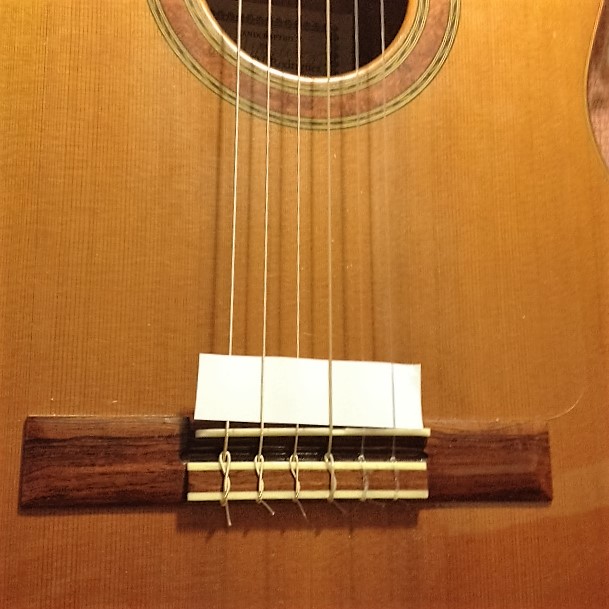Twenty Composition Prompts for Young Guitarists

Young guitarists love writing songs! As with any creative task, the hardest part is getting started, so here are some ideas to inspire budding composers.
Animals
What is your favorite animal? Think about how that animal usually moves. Is it a fast, busy animal or is it slow and lumbering? Does it swim expertly through the water or glide through the air? Write a theme that reflects the animal's normal, everyday style of movement. Then think about how it might move under unusual circumstances. For example, a hummingbird typically moves very fast, but it has to sleep sometime, right? An elephant usually moves slowly and heavily, but how does it move if it gets scared? Write another theme that captures the animal's movement in these more unusual scenarios. Put these contrasting energy states together in a song, and compose short transitions if needed.
Colors
| Learn to play flamenco with Leah this fall! Course starts in October. Sign up now. |
What is your favorite color? How does it make you feel? Write a theme that sounds like your color would sound if it were a pitch or a melody. Now think of another color that complements or contrasts with your favorite color. Write a theme for this color too, and weave in the second theme throughout the piece.
Sounds Around Us
Stop and listen carefully to your environment. What do you hear? If you're at home, you might hear the hum of your refrigerator, the tumble of a washing machine, or the groan of a garbage truck outside. If you're in a very quiet place, you might be able to hear the buzz of the lights, the whine of a phone charger, or water moving through pipes. Write a song inspired by the ambient sound of your choice!
Weird Guitar Sounds

You can get some pretty weird sounds out of the guitar if you know where to look! You've probably discovered that if you play the segments of strings between the nut and the tuning pegs, they make a tinkling, harp-like sound. Another fun trick is to weave a small piece of paper through the strings near the bridge. It sounds like a tiny snare drum is echoing every note you play. Choose your favorite guitar sound effect and feature it in your composition.
Tune Distortion
Choose a common tune that everyone knows and learn the first phrase or two on the guitar. Use your ear or have your teacher help you. Now, keep the same rhythm and contour (the general shape of the line, with similar ascents and descents), but change the pitches of the first phrase or phrases. Let the altered melody inspire you to create a middle section that is entirely your own. Then end the song with a distorted version of the original tune's ending. See if a friend or family member can guess what the original tune was!
Tricky Rhythms
Pick a rhythm that is difficult for you, or have your teacher choose one. For many young beginners, the dotted quarter note poses the first big rhythmic challenge. Other challenges for beginners may be triplets, dotted eighth notes followed by sixteenth notes, or anything similarly syncopated. What better way to overcome this hurdle than to actually use that rhythm in a piece! Use your chosen rhythm at least five times in your song.
Mountains and Canyons

Think about an outdoors trip you'd like to take that involves a change in altitude – maybe climbing a mountain or touring the Grand Canyon. Write a theme that captures your journey using an ascent or descent in pitch. Now write a second theme for the time you spend relaxing on the mountain top or exploring the bottom of the canyon. Finally, loosely invert your original theme as you descend the mountain or climb out of the canyon.
Guitar Drums
The wood of a guitar is specially chosen for its acoustic properties. Tap gently on your guitar in various parts and explore the different sounds. Try using both your nails and your knuckles and listen to the difference in sound color. Next, choose two different sound colors and write a rhythmic theme that features them both. Construct a song around this rhythmic theme. You could present the theme using your percussive effects, and then articulate it again as a melody. Be sure to explain in a footnote precisely how to create the desired effects. You can use an 'x' as a notehead to represent one effect, and a diamond-shaped notehead to represent the other.
Silence and Space
Write a theme that uses several whole-measure rests (two, three, or four beats, depending on your time signature) to create a tranquil, meditative mood. Then write a second theme (also with rests) to be played by a second voice. Present the themes one at a time, then weave them together so that both voices sound at the same time. Keep in mind that the lines do not have to rest at the same time. Also, feel free to change the starting beat of the melodies – they don't always (or ever) have to begin on beat one. Turn the song into a duet if the two lines are difficult to play at the same time.
Short Rests
You can use brief rests to inject excitement and momentum into a musical idea. Write a bright, cheerful introductory theme that is speckled with quarter rests and eighth rests. Modify that theme to make it more continuous (with fewer rests) as you build to an energetic climax, and intersperse the short rests again as you draw to a close.
Artful Articulation
Staccato means playing short, separated notes with a bit of space in between them. Ligado means connecting notes smoothly with no breaks in the sound. Have your teacher demonstrate how to play staccato and ligado on the guitar if you don't already know. Write a song that starts off with a light playful feel, using staccato articulation. Then write a smooth, lyrical ligado section. Combine them using logical transitions that use a bit of both techniques.
Weather

Think about a particular weather event or natural phenomenon – for example, a gentle rain shower, a thunderstorm, a blizzard, or even an earthquake or volcano. Write a song that tells the whole story of this event. Start at the beginning, which may be calm and uneventful in the suburbs, or busy and bustling in a city. Then sprinkle in hints of change – a few stray raindrops or ominous volcanic ash drifiting down (yikes!). Build to a climax as the weather event reaches its peak, and then resolve to an ending as the excitement dies down. You may want to end similarly to how you began, but with some changes that reflect the event's impact.
Sneaking Around with Pizzicato
Pizzicato is a great way to bring sneaky tension to a piece. Ask your teacher to show you this technique on the guitar. Now think about a time when you have done something sneaky, or imagine a sneaky thing you would like to do. For example, maybe you would like to sneak into your sister's room and eat all her halloween candy. Will you get away with your dubious deed? Or will you get caught and end up in trouble? Make the outcome obvious from the music!
Chord Inspiration
Discover an inspiring new chord. If you've been playing garden-variety major and minor chords until now, ask your teacher to show you some sus chords, nine chords, and major sevenths, and see if one of them catches your attention. Arpeggiate a chord that interests you, and use that arpeggio to inspire a melody.
Rhythm from Speech
We often speak in rhythms without knowing it. Think of a random short phrase and ask several different people to say it out loud. You'll probably observe that they all say it in more or less the same rhythm. Figure out the rhythm and notate it. For example, most people say 'pepperoni pizza' as four sixteenth notes plus two eighth notes. Write a melody that features the rhythm of your phrase.
Modal Magic
Learn a mode or a new kind of scale (ask your teacher!). The whole tone scale, pentatonic blues scale, or Phrygian scale can be an inspiring departure from the usual major and minor. Write a song using only the notes in this new scale.
Compose a Flavor

Choose a favorite food and think about its most important ingredients. If you love slushies, your ingredients would be ice and flavored syrup. If your favorite food is pizza, you'd need crust, tomato sauce, cheese, and maybe a topping. Write short themes to represent each of the ingredients. Gradually mix the themes together until they form a complete, delicious theme that has a flavor completely different than that of its individual ingredients.
Bass Lines
Write a simple bass line using only notes on strings 4, 5, and 6. If you haven't learned those notes yet, just use open strings. Now write at least two different melodies that fit nicely over your baseline. Combine the melodies in a structured way to create a song over the same continuous bass line.
Favorite Interval
Do you have a favorite interval? You may want to have your teacher play different intervals for you so you can get to know them better. Choose a single interval; write a theme that begins with this interval and features it prominently.
A Slippery Situation

Think about a time where you've had trouble keeping your balance. Maybe you have slipped on an icy sidewalk, worn socks on a freshly polished floor, or maybe you tried a sport like ice-skating or skiing. Ask your teacher to show you how to play slurs (aka hammer-ons and pull-offs) and slides, if you don't already know. Write a theme that captures the feeling of unsteadiness by using slurs. Write another theme that uses slides to evoke the feeling of falling over. Did you improve at keeping your balance by the end of the experience, or did you finish just as wobbly as you started? Make the ending of your piece reflect the outcome!
A note for teachers: these prompts can be adapted for children of all ages. Depending on the level of the student, the composition can be just a single short melody or a fully developed piece with several structural parts and multiple voices. Many of these ideas make use of two contrasting themes, which may be a bit much for beginning composers. If your student is just starting to write songs, just use the first idea within a given prompt. For example, for 'Animals', have your student write a song that embodies how their favorite animal moves, without any change or contrasting idea. Enjoy!




